YO, DOC, LISTEN UP!
An exhibition about Deafness, hardness of hearing, and inclusive healthcare
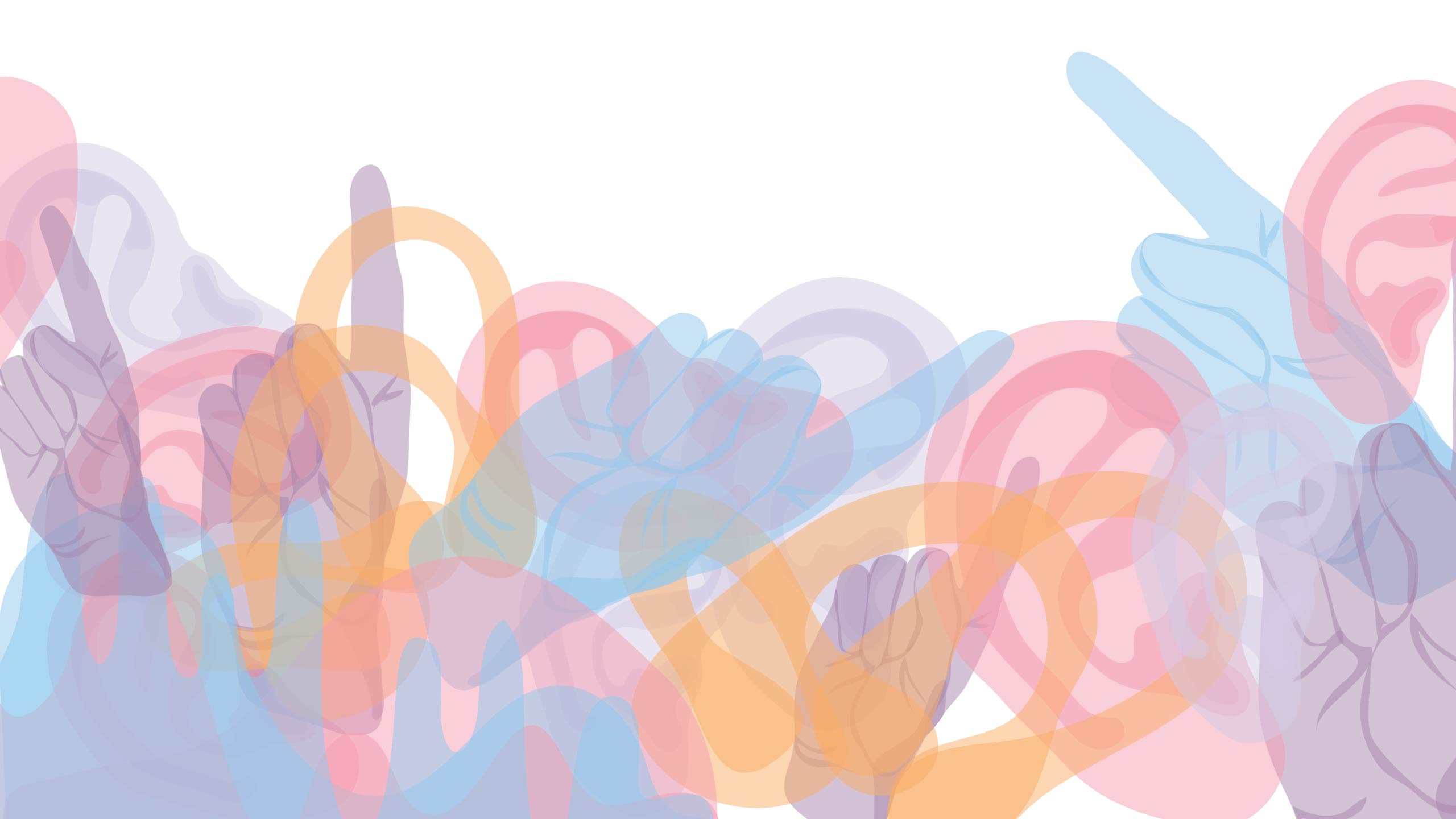
WELCOME IN THE WORLD OF THE DEAF AND THE HARD OF HEARING
Sit back and take a good look around you. Close your eyes. Open your ears. What all do you hear? What is other people's hearing?
Deaf
Deaf people do not have an auditory disability, because they don't use oral communication. They are a cultural minority group in the Netherlands and have their own visual language: Dutch Sign Language.
Hard of hearing
Hard-of-hearing people experience a loss or distortion of sound. As a result, their hearing environment can be very diverse and lead to obstacles in communication. Hearing aids help, but are not a cure. Despite hearing aids or cochlear implants, people with late or sudden deafness remain hard-of-hearing in varying degrees.
Hard of hearing vs Deaf
Deafness and Hard of Hearing do not form a unified whole. The world of Deaf and hard of hearing people is diversely composed.
What actually is Deaf culture?
What barriers do deaf and hard-of-hearing patients encounter in healthcare?
Can a doctor also be deaf or hard of hearing?
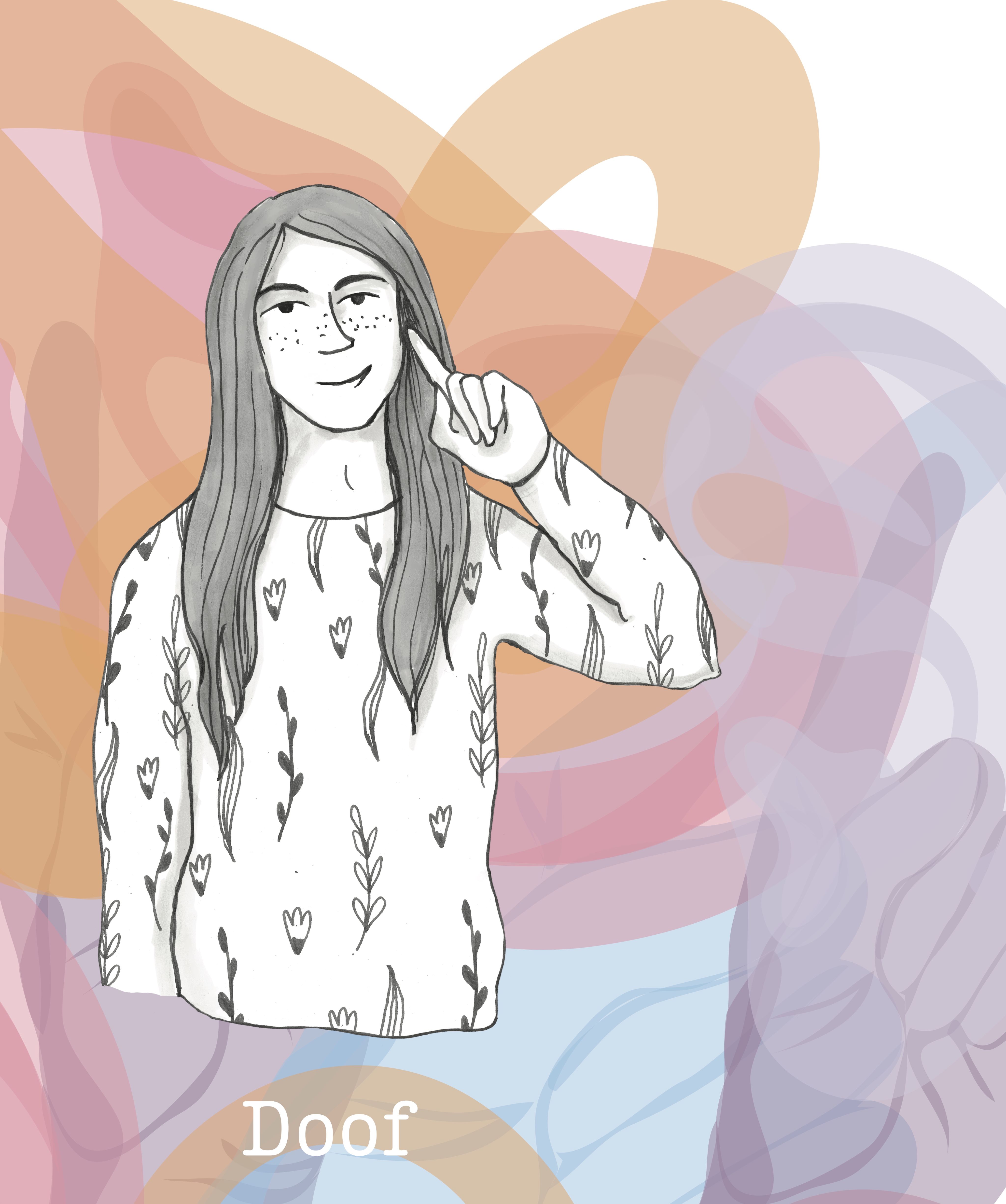

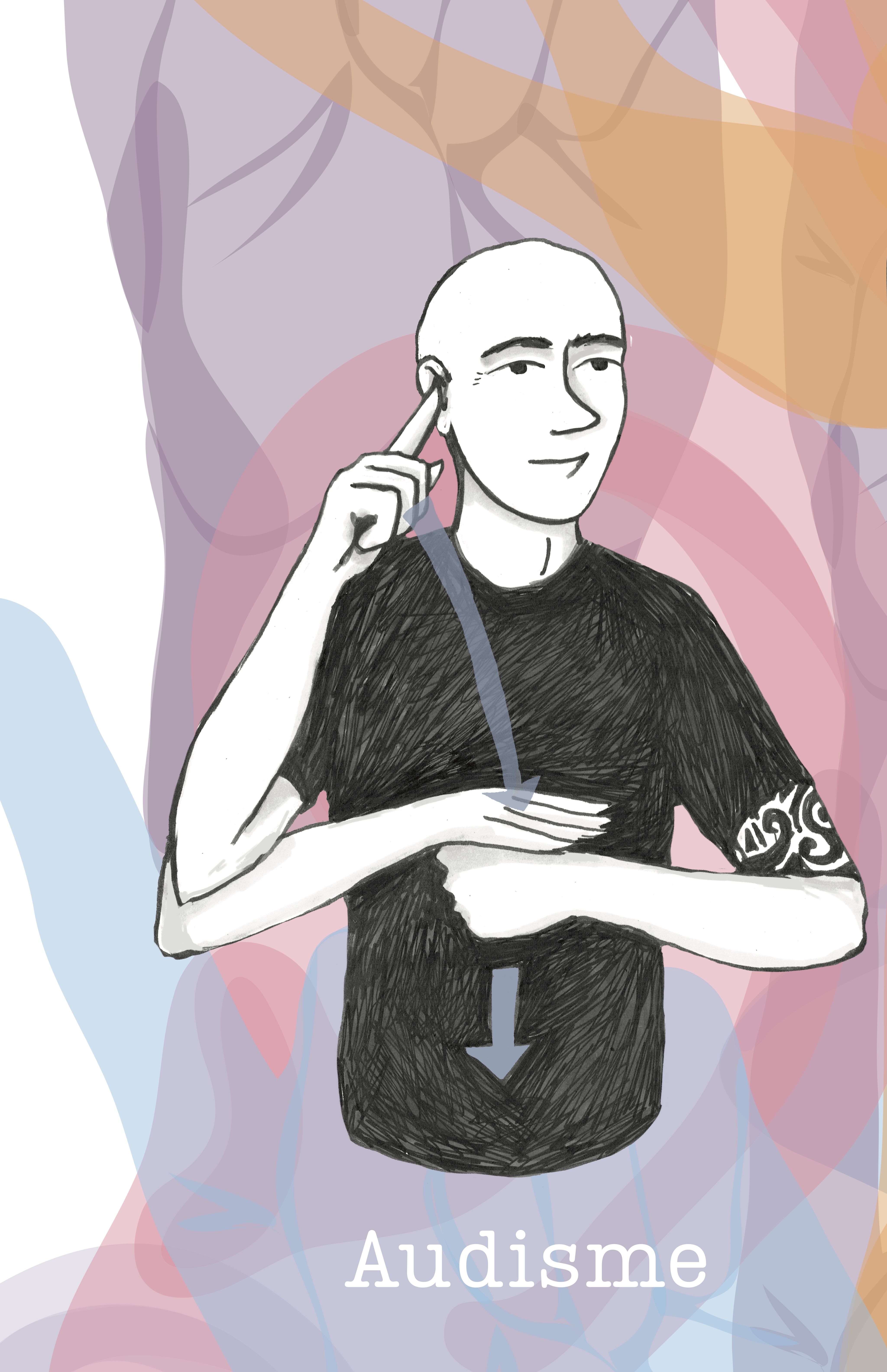


DEAF CULTURE & SIGN LANGUAGE
deaf or Deaf?
Did you know that there is an important difference between 'deaf' as severe hearing loss, and 'Deaf' as identity?
People who are Deaf have developed their own identity and culture: Deaf culture. Knowledge of Deaf culture is important for everyone, but especially for a good doctor-patient relationship and effective care.
A HISTORY OF DEAF CULTURE
Deaf people do not consider deafness a disability, because their motto is:
‘We can do everything, except hearing’
They are a cultural minority with a rich language and culture - and therefore their own identity and customs.
At the same time, Deaf people have always been part of society at large.
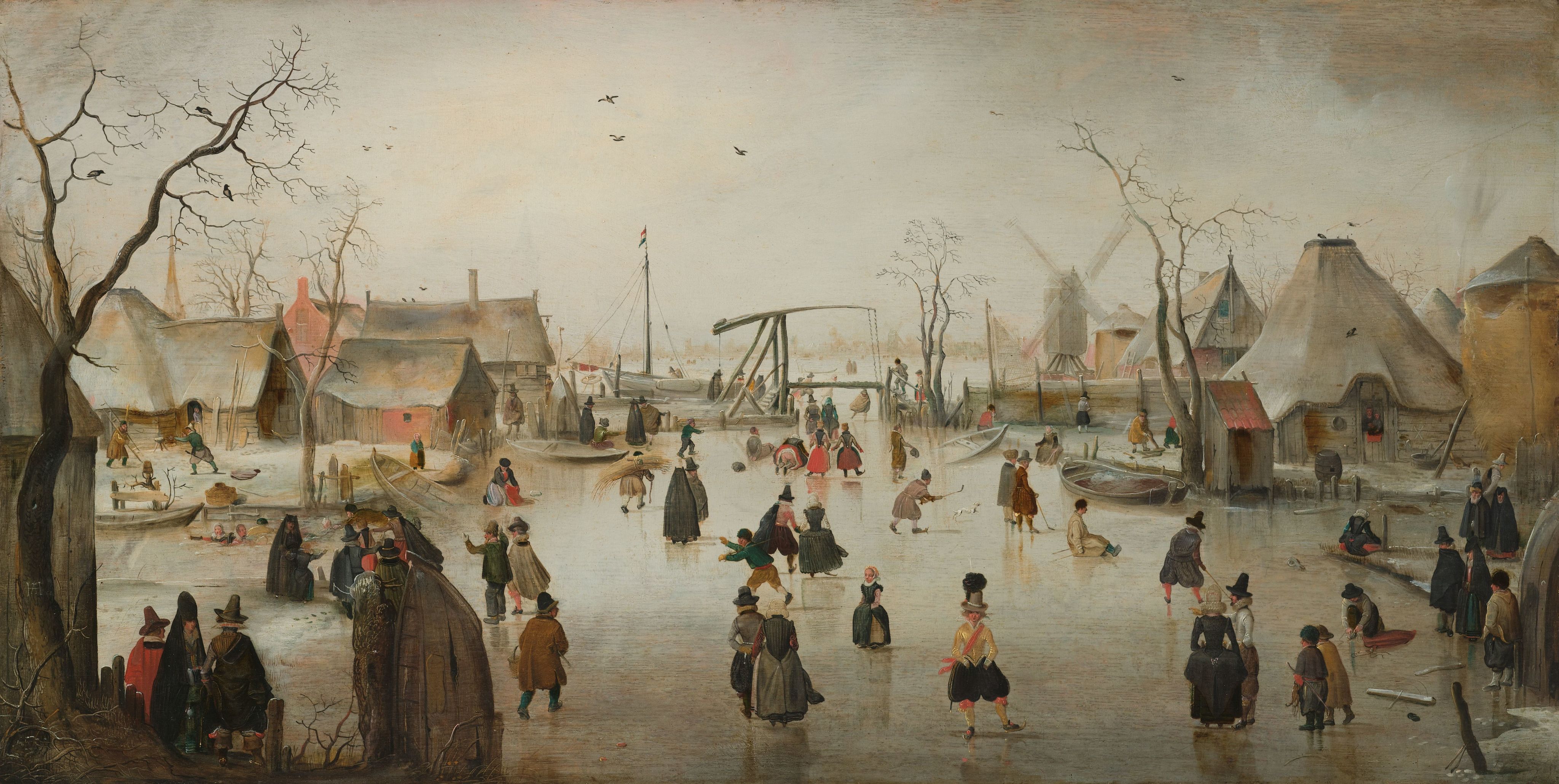
Ice skating in a village, Hendrick Avercamp, c. 1610. Rijksmuseum, Amsterdam.
Ice skating in a village, Hendrick Avercamp, c. 1610. Rijksmuseum, Amsterdam.
Ice skating in a village
Deaf painter Hendrick Avercamp is still famous for his beautiful winter landscapes.
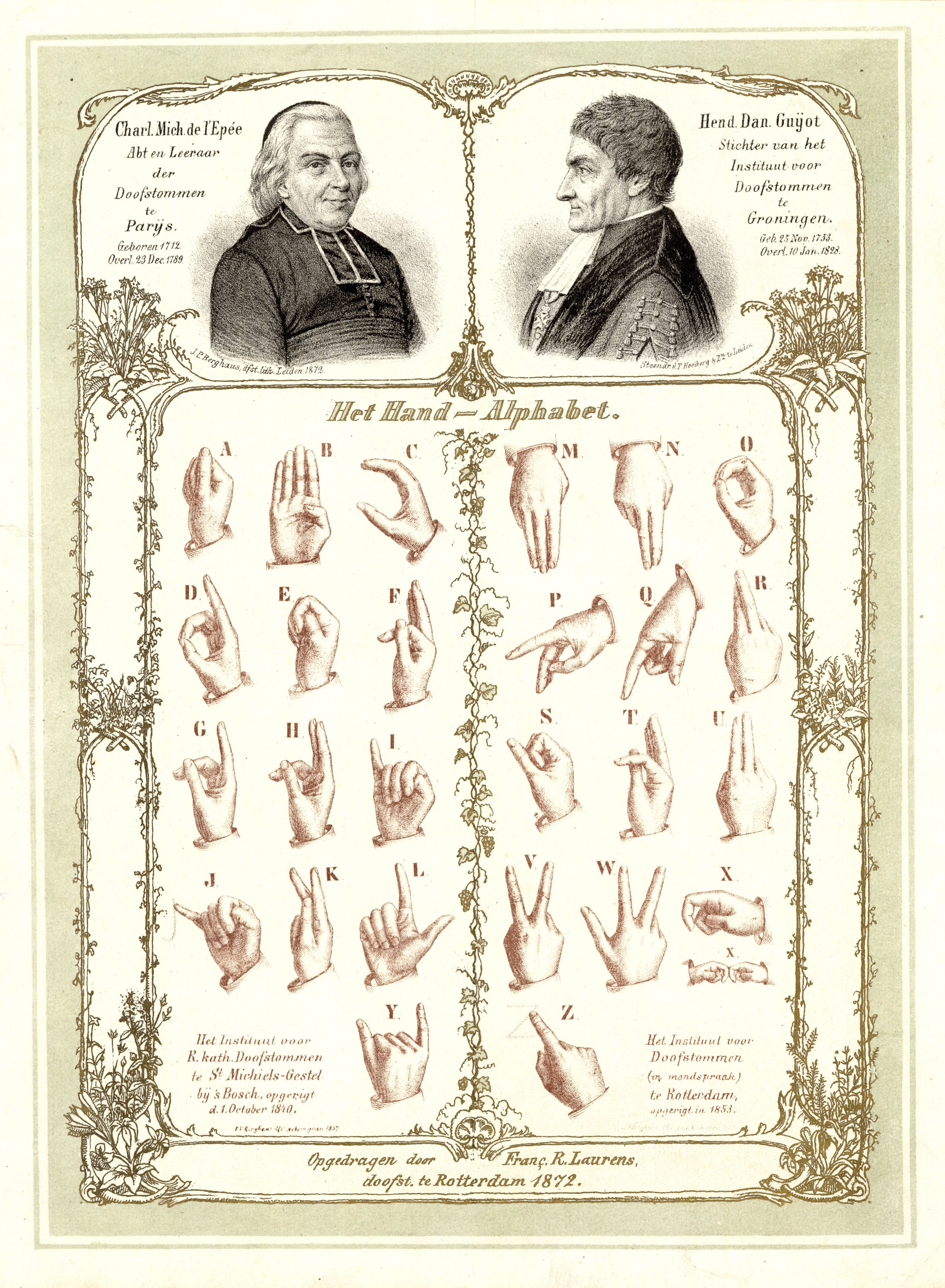
The hand alphabet of Abbé de l'Epée and Henry D. Guyot.
The hand alphabet of Abbé de l'Epée and Henry D. Guyot.
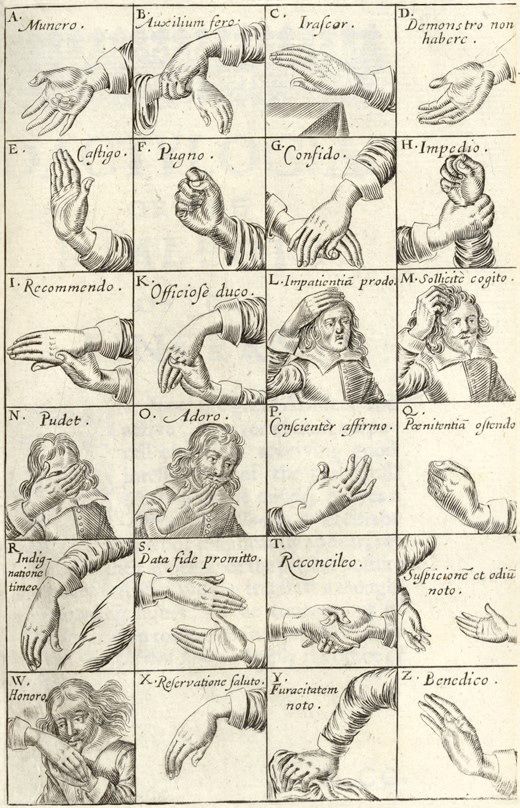
The hand signs of John Bulwer, engraving ca. 1650
The hand signs of John Bulwer, engraving ca. 1650

Notebook with hand alphabet of J.L. Mörser, c. 1800. Click on the image to view the entire notebook!
Notebook with hand alphabet of J.L. Mörser, c. 1800. Click on the image to view the entire notebook!
Since the 17th century, scientists have been researching the character of gestures of Deaf people, because much of all communication is through facial expressions and body language.
In situations when oral communication is not possible - such as in sports, traffic, or in prayer - Deaf people, as well as hearing people, wave and stick their thumbs up or make gestures.
Teachers were beginning to take Deaf people's gestures more and more seriously and mapped them systematically.
John Bulwer (1606-1656), an English physician and philosopher, attempted to capture vocabulary in hand gestures and body movements and in 1644 published Chirologia, or the Natural Language of the Hand, alongside an accompanying text Chironomia, or the Art of Manual Rhetoric, an illustrated collection of hand and finger gestures intended for an orator to memorise and perform while speaking.
In 1790, rev. Henri Daniel Guyot opened the first Dutch School for the Deaf in Groningen.
From the early days of Deaf education, the children learn together in Sign Language. When they leave school they keep in touch, find jobs and marry.
Over time, several special Doven schools have been established in the Netherlands. In recent years, these have merged into Kentalis and Auris.
The Deaf from the various Deaf schools form their own community and develop their own culture.
"Un-dumbing"?
Watch video clip "The Deaf" from De Hokjesman (VPRO, 2014).
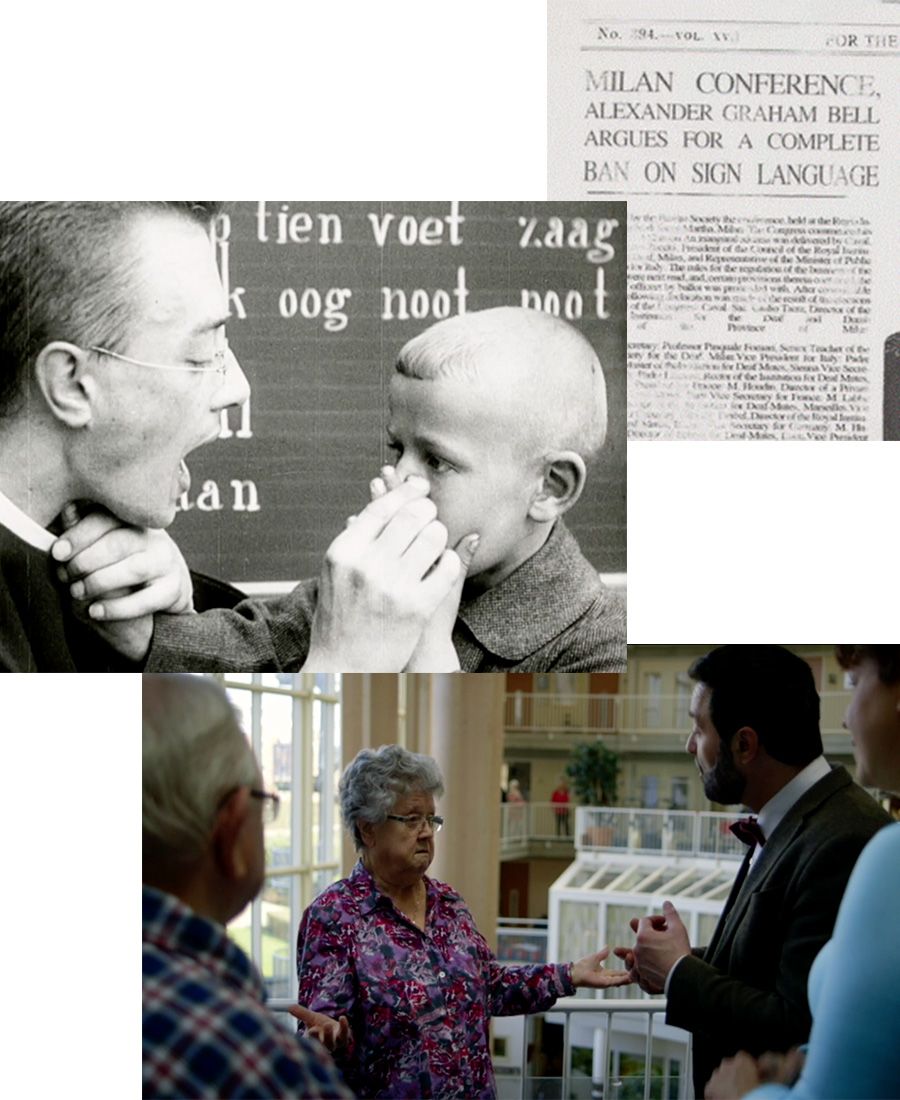
In 1880, the International Congress on Deaf Education was held in Milan.
The (hearing) teachers were of the opinion that sign language was getting in the way of integration. It was decided that Deaf children should learn to speak.
Until 1980, the natural language of Deaf people was suppressed. Deaf people continued to sign among themselves, but not in contact with hearing people.
Once signs were allowed in the 1980s, Dutch Sign Language (DSL/NGT) developed rapidly. Like all other languages, NGT has its own grammar and regional variants (dialects). Poetry and sign language artists also exist.
The Dutch parlement officially recognised NGT in 2021.
Today there is a much greater visibility of Sign Language.
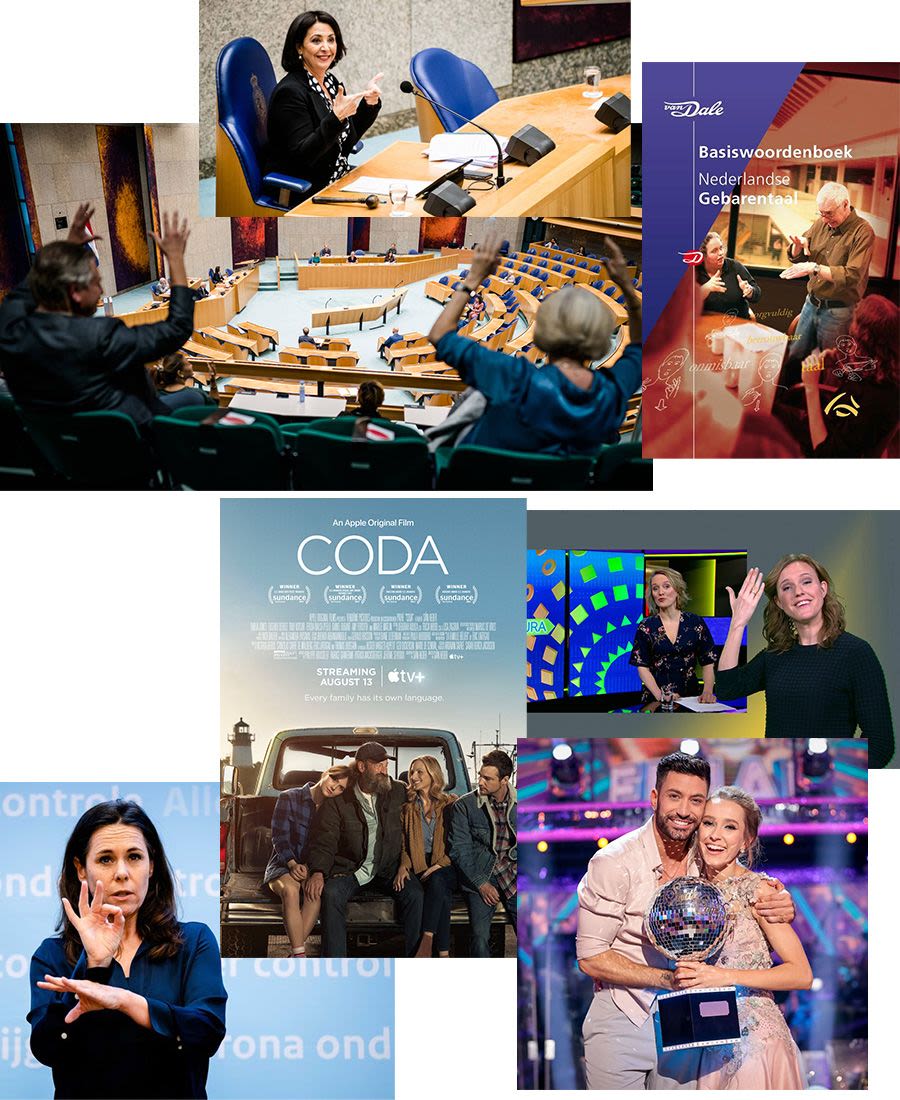
Dutch House of Representatives support the NGT recognition law / Van Dale Basic Dutch Sign Language Dictionary / Sign language interpreter at press conferences / film CODA, Oscar winner 2022 / Sign language interpreter NOS (Youth) News / Strictly Come Dancing winner Rose Ayling-Ellis
Dutch House of Representatives support the NGT recognition law / Van Dale Basic Dutch Sign Language Dictionary / Sign language interpreter at press conferences / film CODA, Oscar winner 2022 / Sign language interpreter NOS (Youth) News / Strictly Come Dancing winner Rose Ayling-Ellis
Next Generation Speaks x Sencity Festival: (Un)spoken Lab
Advocates
One of the advocates of the Dutch Deaf community was Sam Pattipeiluhu (1950-1996). A Deaf teacher and remedial educationalist, he was the founder of the teacher/interpreter training in Dutch Sign Language (NGT).
Since the 1980s, Sign has been allowed to be used in education. Since 1995, bilingual education has been introduced in Deaf schools.
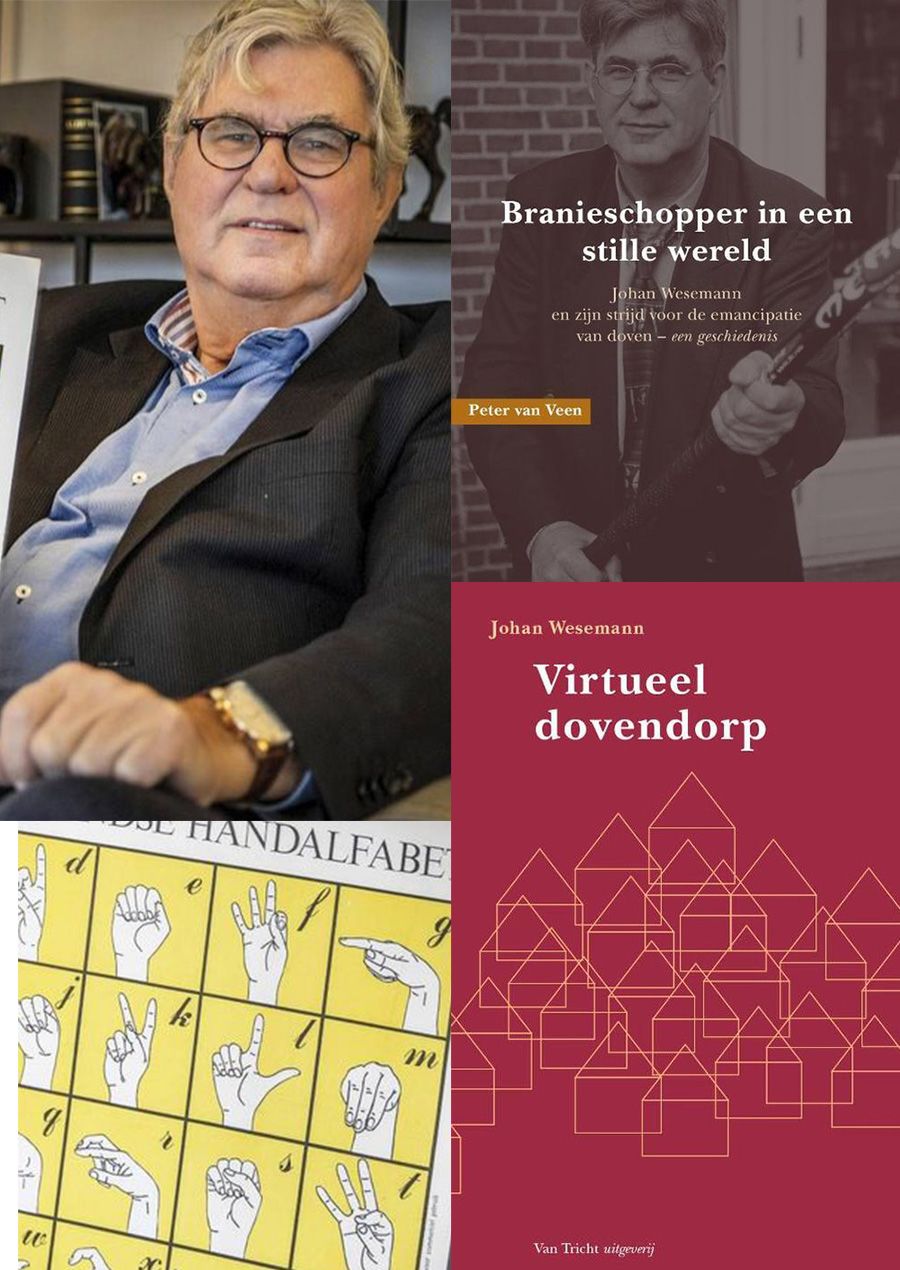
Books by Peter van Veen, 'Rebel in a Silent World' (2020) and Johan Wesemann, 'Virtual Deaf Village' (2020)
Books by Peter van Veen, 'Rebel in a Silent World' (2020) and Johan Wesemann, 'Virtual Deaf Village' (2020)
Another advocate is Johan Wesemann (1944). He advocates for the emancipation of deaf people. He became a rebel in his struggle against the hearing, the power of institutions for the deaf, and political reluctance.
He dedicates himself with heart and soul to the deaf: for their culture, sign language and for equality in society.
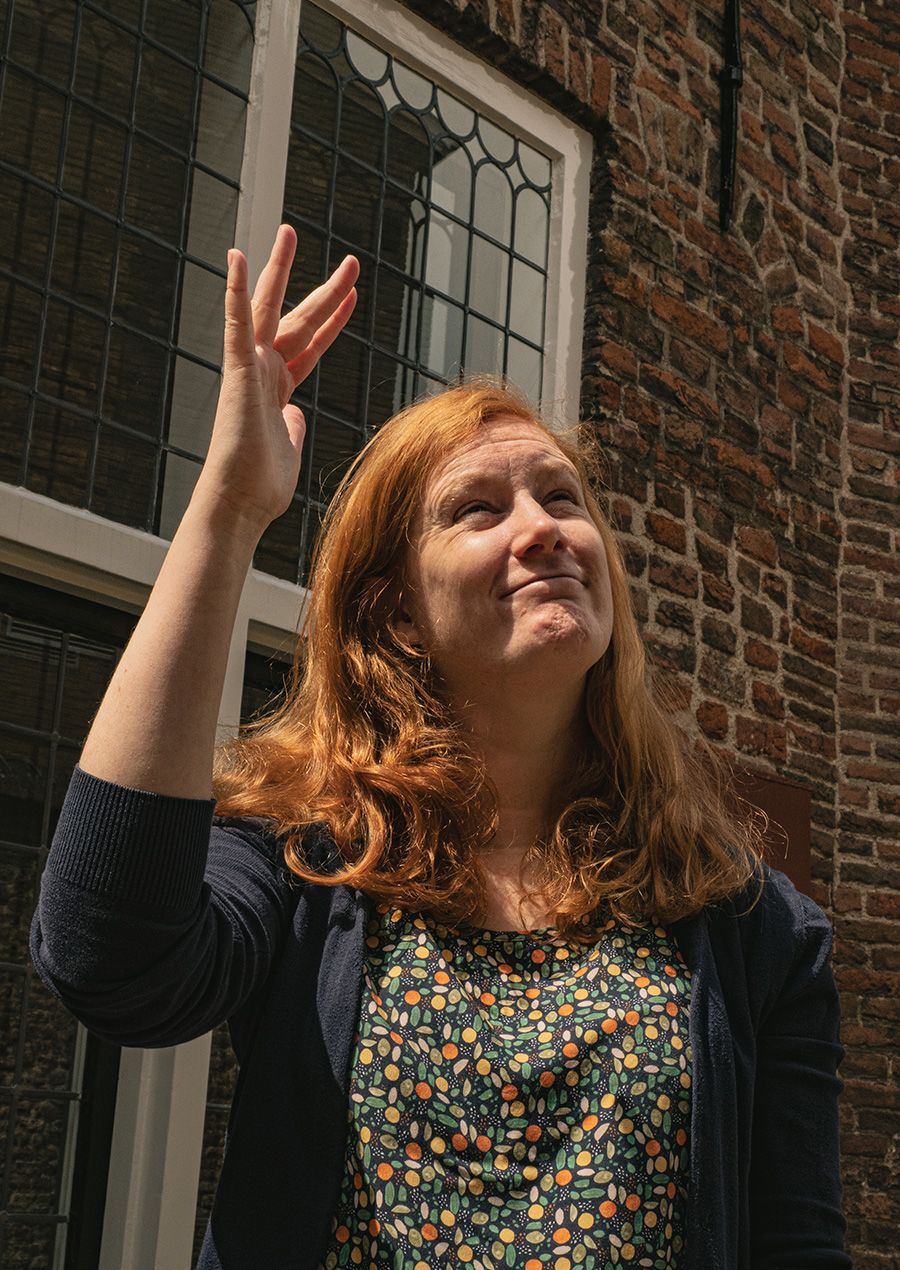
Photo of Lianne Westenberg (2022)
Photo of Lianne Westenberg (2022)
Lianne Westenberg is also committed to Deaf Culture.
"My name is Lianne and I graduated as an anthropologist. I also work as a museum guide at Amsterdam Museum and The Hermitage where I give guided tours in sign language. I work on Deaf history in the working group Deaf Cultural Heritage of Dovenschap."
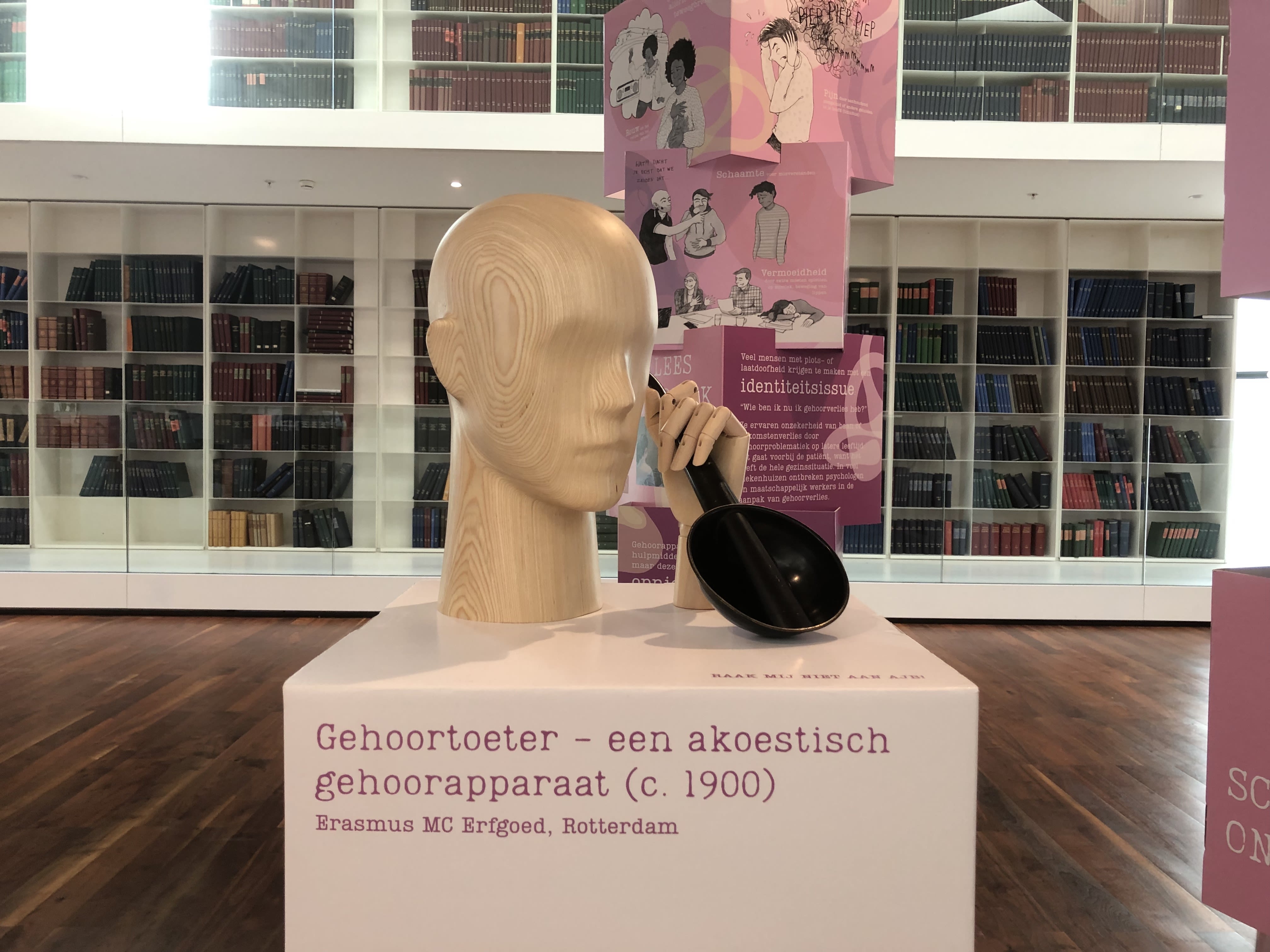
HARDNESS OF HEARING
Away with our timidity!
Forms of hearing loss can occur due to illness, accident, prolonged exposure to loud noise and old age..
How do people experience hardness of hearing? And what solutions have they come up with to overcome obstacles in communication?
Mourning the loss of hearing
Pain caused by persistent ringing or other noises in your head (tinnitus)
Loneliness and feelings of exclusion, because you don't get jokes, for example.
Shame for misunderstandings
Exhaustion due to having to pay extra attention to facial expressions and movement of lips
Frustration or embarrassment at having to continuously say "excuse me?"
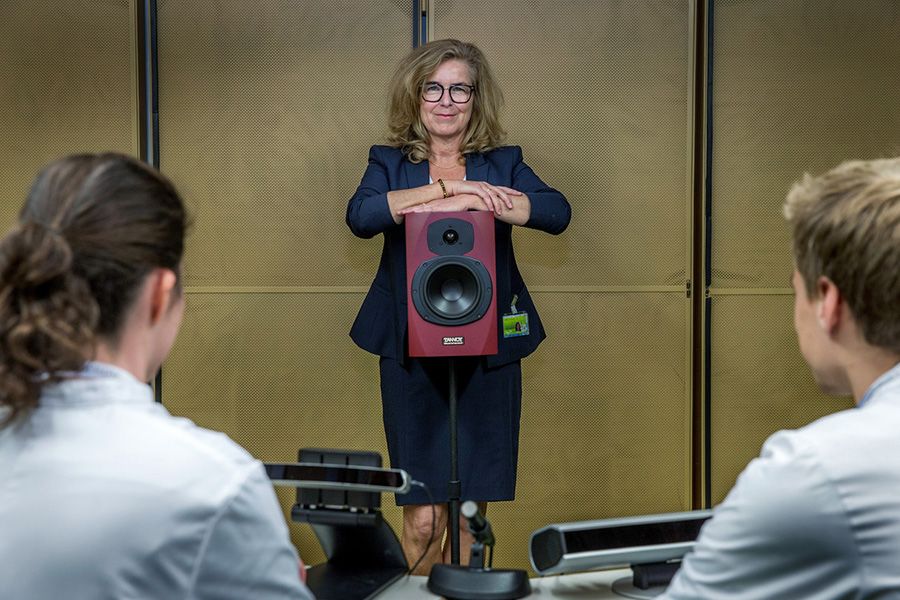
'Hearing is more than just listening: it involves cognitive functions' / Click on the image to read the article in Trouw about Professor Sophia Kramer's research!
'Hearing is more than just listening: it involves cognitive functions' / Click on the image to read the article in Trouw about Professor Sophia Kramer's research!
Research by neuropsychologist and professor Sophia Kramer shows that hearing loss may be related to dementia. Possible causes include lack of social contact and lack of stimuli. It is therefore of utmost importance that elderly people with hearing loss that cannot be treated use hearing aids.
Many people with sudden or late deafness face an identity issue:
"Who am I now that I have hearing loss?"
They experience job insecurity or loss of income due to hearing problems later in life. This goes beyond the patient, as it affects the entire family situation. Many hospitals lack psychologists and social workers in dealing with hearing loss.
To prevent psychological problems, appointing a team of psychologists and social workers in ENT departments of hospitals is a necessary step.
Hearing aids are designed to help the hard of hearing, but these people will have to learn to hear again. Carefully fitting these aids to the user takes time and training.
Hearing aids amplify all sound, including background noise. It can take weeks or even months for a hard-of-hearing person to get used to hearing with the artificial sounds of the hearing aid. And even then, others will have to make allowances for the hard-of-hearing person.

Book by Dutch Association of the Hard of Hearing (predecessor of Stichting Hoormij/NVVS) 'Away with our timidity' (2008)
Book by Dutch Association of the Hard of Hearing (predecessor of Stichting Hoormij/NVVS) 'Away with our timidity' (2008)
The hard of hearing find much support in associations and foundations to promote each other's interests. In 1907, the monthly magazine Het Gehoor first appears and in 1910 the Dutch Union for the Hard of Hearing is founded. Today there are also many local associations.
"I am Wies Groeneveld, author of the book 'One and All Ear'. In my childhood I became hearing impaired due to meningitis. Due to otosclerosis, I later became completely deaf. Since 2014, I have had a cochlear implant. That is my salvation. I only pick up sounds in one ear, so I often don't know where sounds are coming from. Troublesome, especially in traffic."
"I live in a hearing environment. It takes a lot of concentration to take in as much as possible. Especially in situations where many sounds are mixed together. I have to pay extra attention to movement of lips and facial expressions. These efforts cost tons of energy."
"Despite the current technical possibilities for muffling background noise, this problem has unfortunately not yet been solved. Sounds I want to hear, I often do not hear or hear them far from optimally. In America, research is currently underway into the possibility of brain-controlled hearing aids, which allow you to hear precisely the sounds that are relevant to you. It's not easy, but with artificial intelligence it seems to be possible in principle, according to the researchers."
"Could something like that also be applied to cochlear implants? And would I still be allowed to experience such a thing?"
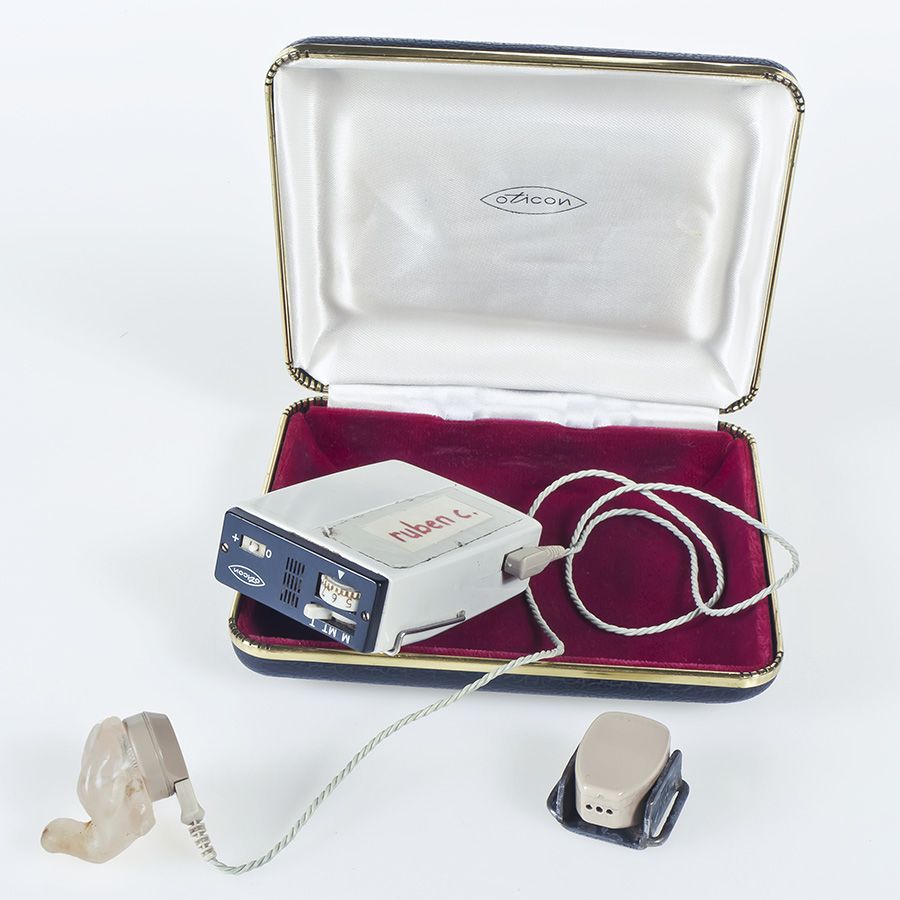
Museum Rotterdam
Museum Rotterdam
Ruben C. was born deaf and received a lot of support from his family. As a child, he wore an Oticon hearing aid with vibration function in a special vest under his clothes. The whole family moved to Rotterdam, so Ruben could attend deaf school there and did not have to leave home.
Ruben now lives on his own, but still receives support from his family.
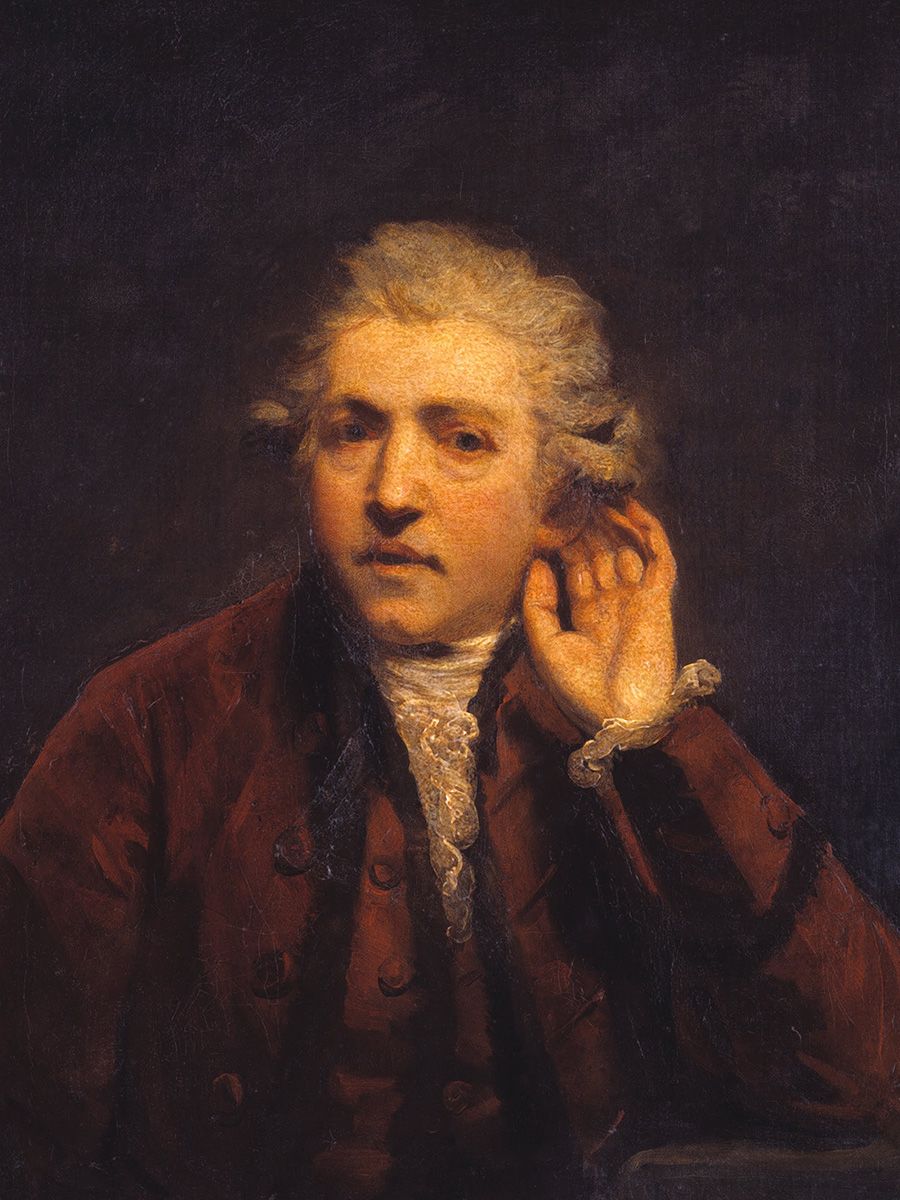
Zelfportret van Sir Joshua Reynolds (TATE)
Zelfportret van Sir Joshua Reynolds (TATE)
The famous portrait painter Sir Joshua Reynolds (1723-1792) was hard of hearing from the age of 25, but used an ear trumpet and also made self-portraits as a deaf person.
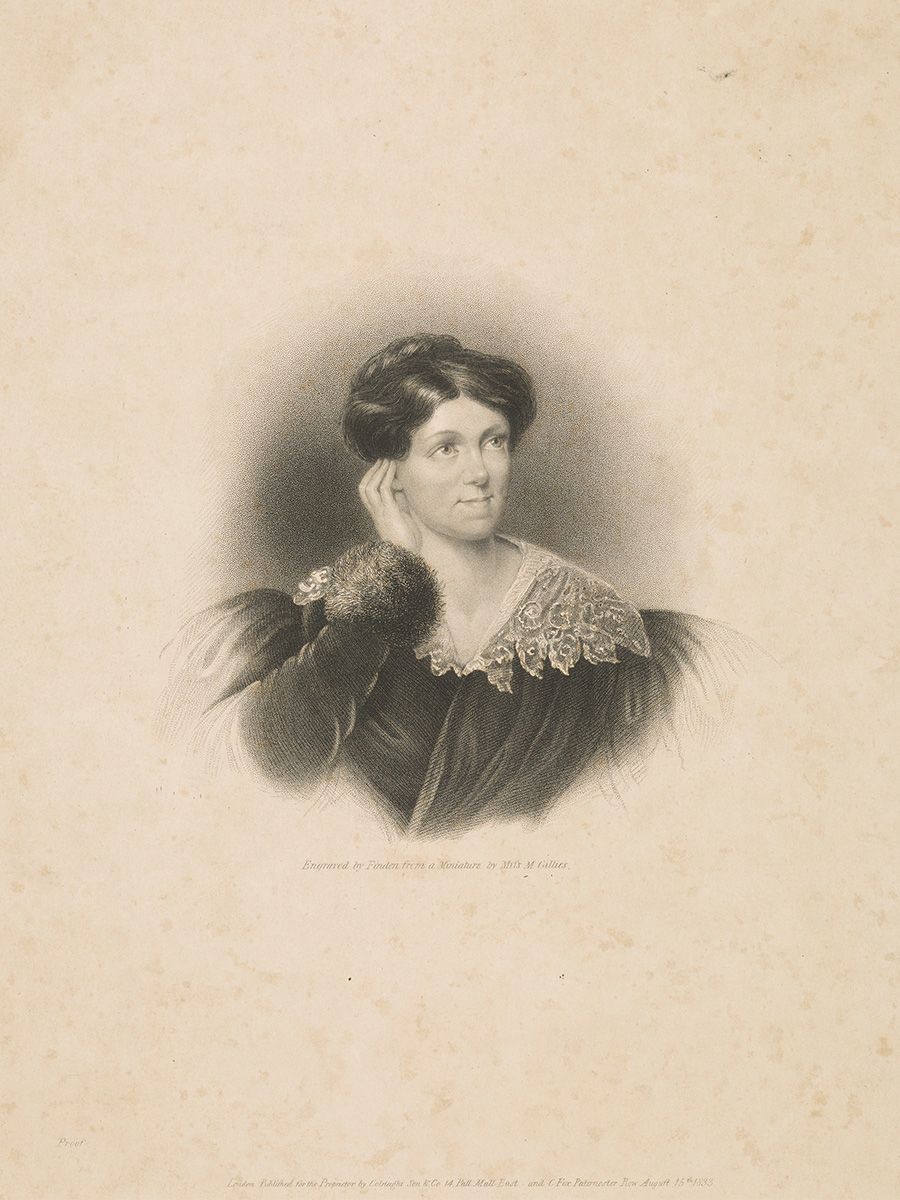
Portret van Harriet Martineau Margaret Gillies (Scottish National Portrait Gallery, Edinburgh)
Portret van Harriet Martineau Margaret Gillies (Scottish National Portrait Gallery, Edinburgh)
Sociologist Harriet Martineau (1802-1876) argued that the hearing aid should always be visible so that people would speak clearly.
Some hard-of-hearing people decorate their hearing aids and fashion designers design hearing aids.

Image of actor and activist Chella Man's jewelry collection in collaboration with fashion brand Private Policy
Image of actor and activist Chella Man's jewelry collection in collaboration with fashion brand Private Policy

Image of Deafmetal Hearing Device Jewelry
Image of Deafmetal Hearing Device Jewelry
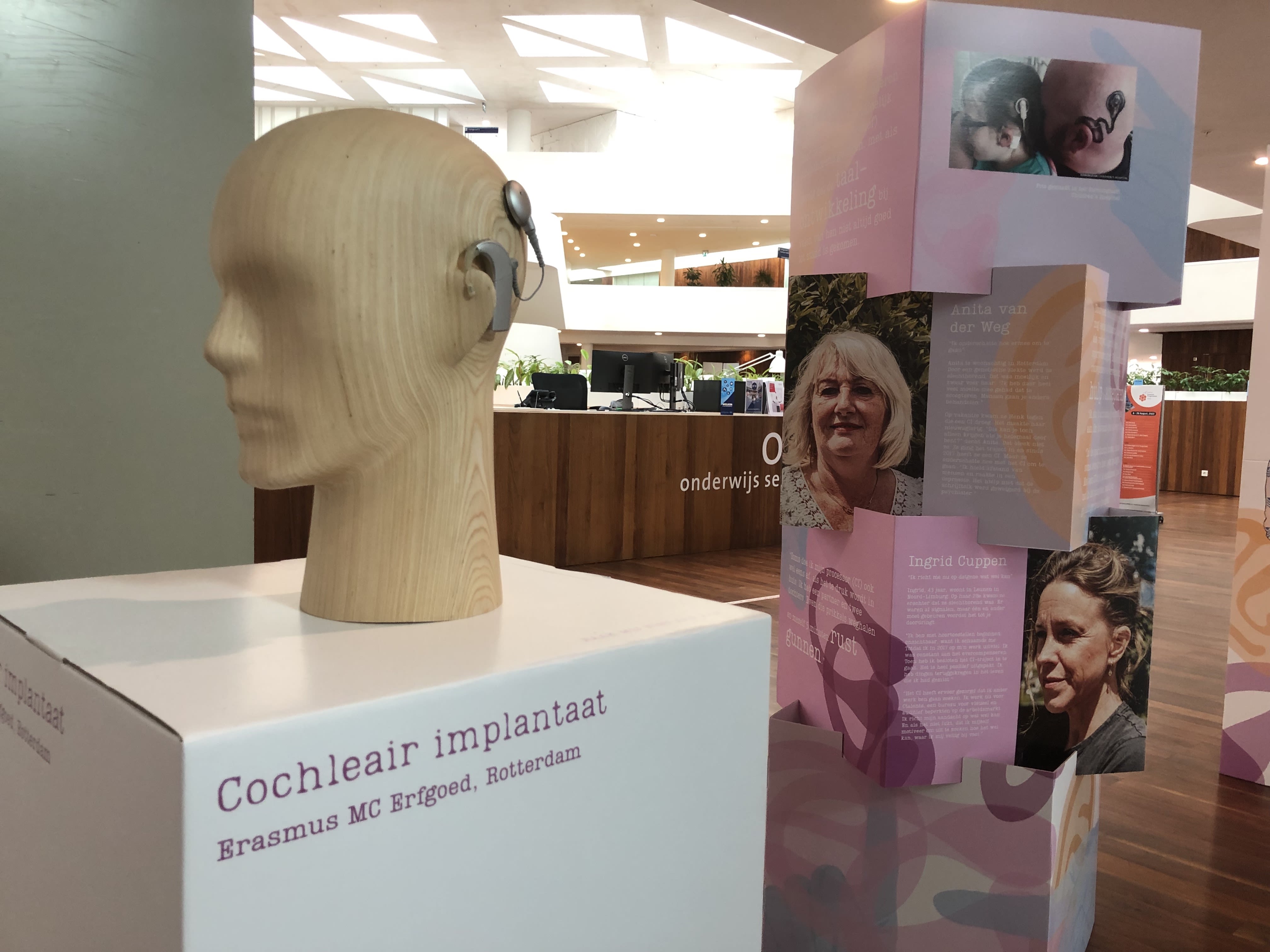
COCHLEAR IMPLANT
The cochlear implant (CI) is a highly advanced technology aimed at people for whom ordinary hearing aids are not good enough.
Does that make it the panacea for all types of hearing impairment? Is it a threat to Deaf culture?
How do people actually experience the CI?
HOW DOES A COCHLEAR IMPLANT WORK?
Unlike hearing aids that only amplify sound, a CI bypasses the damaged inner ear and directly stimulates the auditory nerve in the cochlea. It consists of an internal and external part.
With a CI, people who have little or no residual hearing can again perceive, to a limited extent, sounds, noises and speech.
The CI has an eventful history. Some people paint too rosy a picture of the effectiveness of the CI. Others deny the possibilities of the CI or try to dismiss it as a danger to Deaf culture.
It is therefore extra important to present a truthful and realistic picture.
This interactive article is about the CI and how CI wearers (can) experience sound.
Sound perception is not the same for every CI wearer, but these audio clips come closest to what some CI wearers experience.
OPCI is the abbreviation for the Dutch Independent Platform Cochlear Implantation. At the end of 2005, interest groups for the deaf and hard of hearing joined forces in the field of CI. OPCI is a working group that falls under the Platform for the Deaf, Hard of Hearing and TOS.
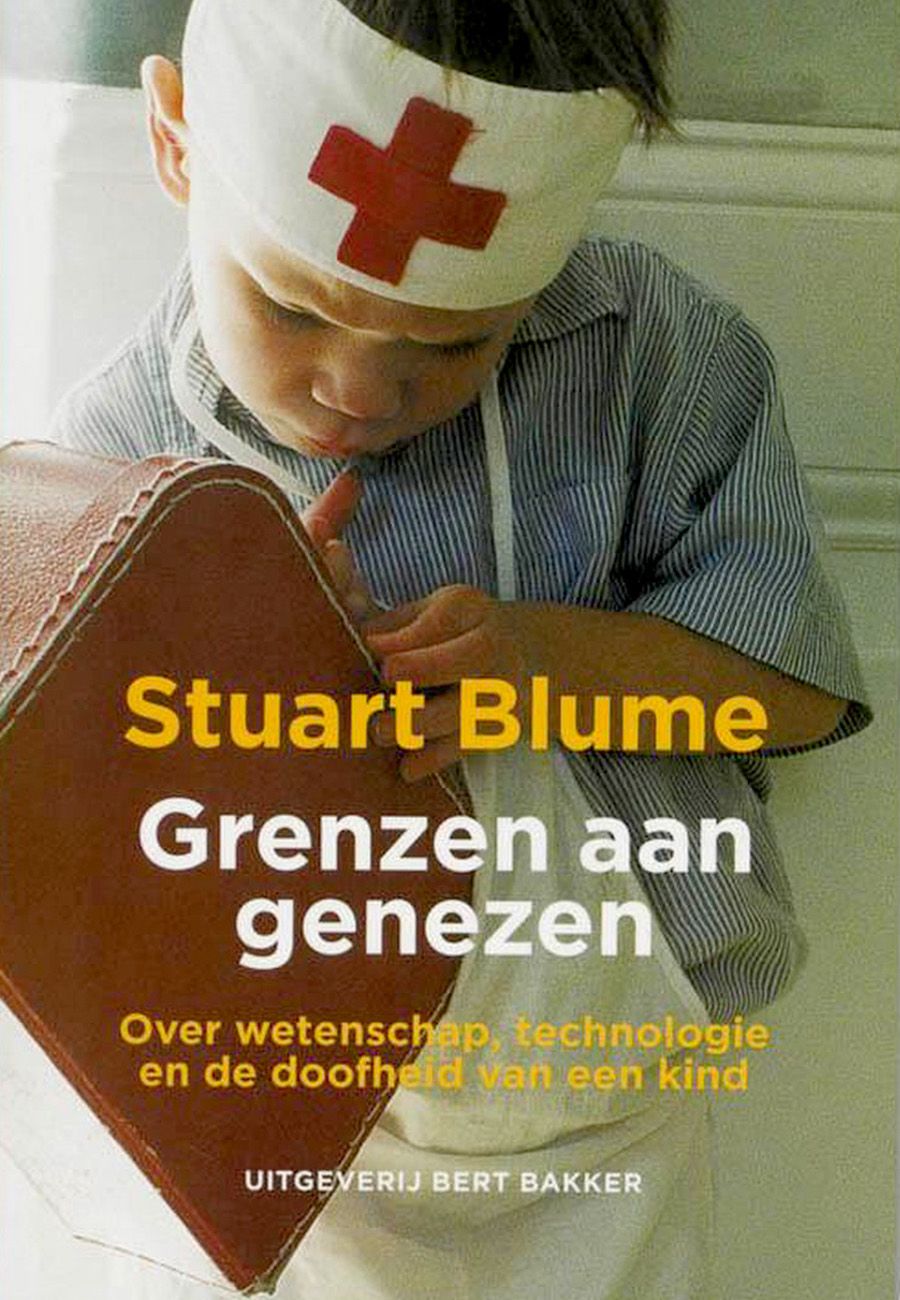
Stuart Blume, Grenzen aan genezen (2006)
Stuart Blume, Grenzen aan genezen (2006)
In Limits to Healing, Stuart Blume gives a personal account of his struggle to accept his child's deafness and, more generally, addresses the ethical issues raised by the application of modern medical techniques.
"Understanding speech in noisy environments remains difficult. A hearing aid is nice because it brings speech closer."
"It is still nice to have talk shows with subtitles."
"Music sounds pleasant to half of CI wearers....
to the other half it sounds out of tune."
"Social contact has improved thanks to the CI, but listening and hearing still remain tiring for many CI wearers."
"Interpreters are also important for CI wearers. This facility should be expanded."
"People sometimes forget that CI wearers are still deaf."
Currently, one implant is reimbursed by the Dutch healthcare insurance, while many people could benefit from a second CI. Given the high cost, only wealthy people can afford a second CI.
Health inequities already play a role with one CI, because buying a processor can easily cost €9000, which people with small budgets cannot easily afford.
Some Dutch political parties want that when people are 70+, they are no longer eligible to be reimbursed for a CI.
Fortunately, that is not the case now and you can always qualify.
Children and adolescents with a CI are primarily born deaf or very (progressively) hard of hearing, with the result that language in many of them has not always been well developed.
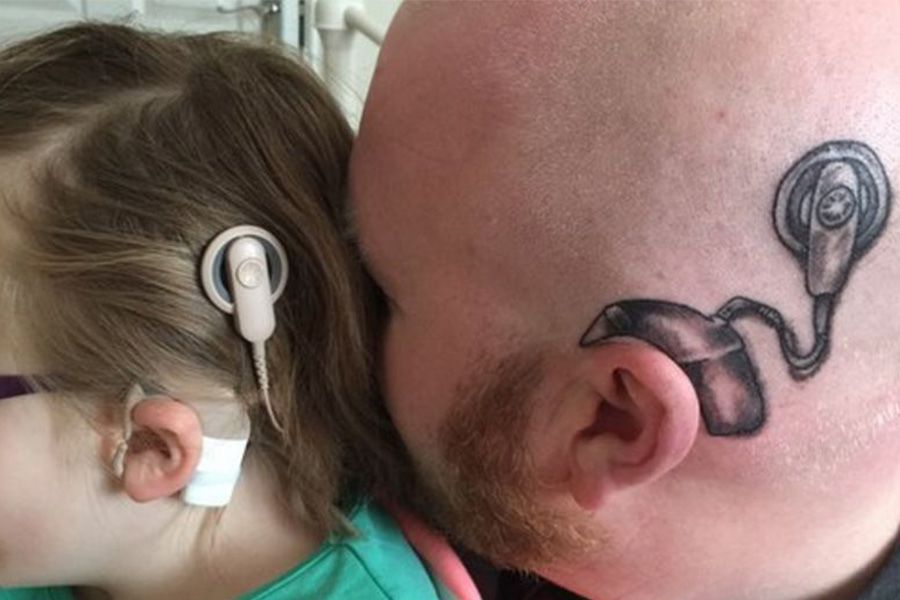
Photo made in the Birmingham Children’s Hospital
Photo made in the Birmingham Children’s Hospital
Adults with a CI have become mostly progressively hard of hearing, or were sudden deaf or late deaf. Many of them are familiar with and have been part of the hearing world.
Experiences with CI

"I underestimated how to deal with it."
Anita van der Weg lives in Rotterdam. Due to a genetic disease, she became hearing impaired. That was difficult and hard for her. "I had a lot of trouble accepting that. People start treating you differently."
On holiday, she met Henk who was wearing a CI. It made her curious. "Surely you can only get one if you are completely deaf?" Anita thought. As it turned out, not so. She entered the process and since 2017 she has had a CI. But she underestimated how to deal with the CI. "I kept my distance from people and fell into depression. It didn't help that the writing interpreter was refused at the psychiatrist's office."
A brain attack also caused her to be unfit for work. But now she works as a volunteer at a sports club. It helps her cope with the grieving process and accept help. "I get up in the morning and the CI goes on. And in the evening it goes off again."
"In the sports canteen, sometimes people have to say things to me three times. With a CI I remain hard of hearing, but now that I accept that, I have become a happier person."
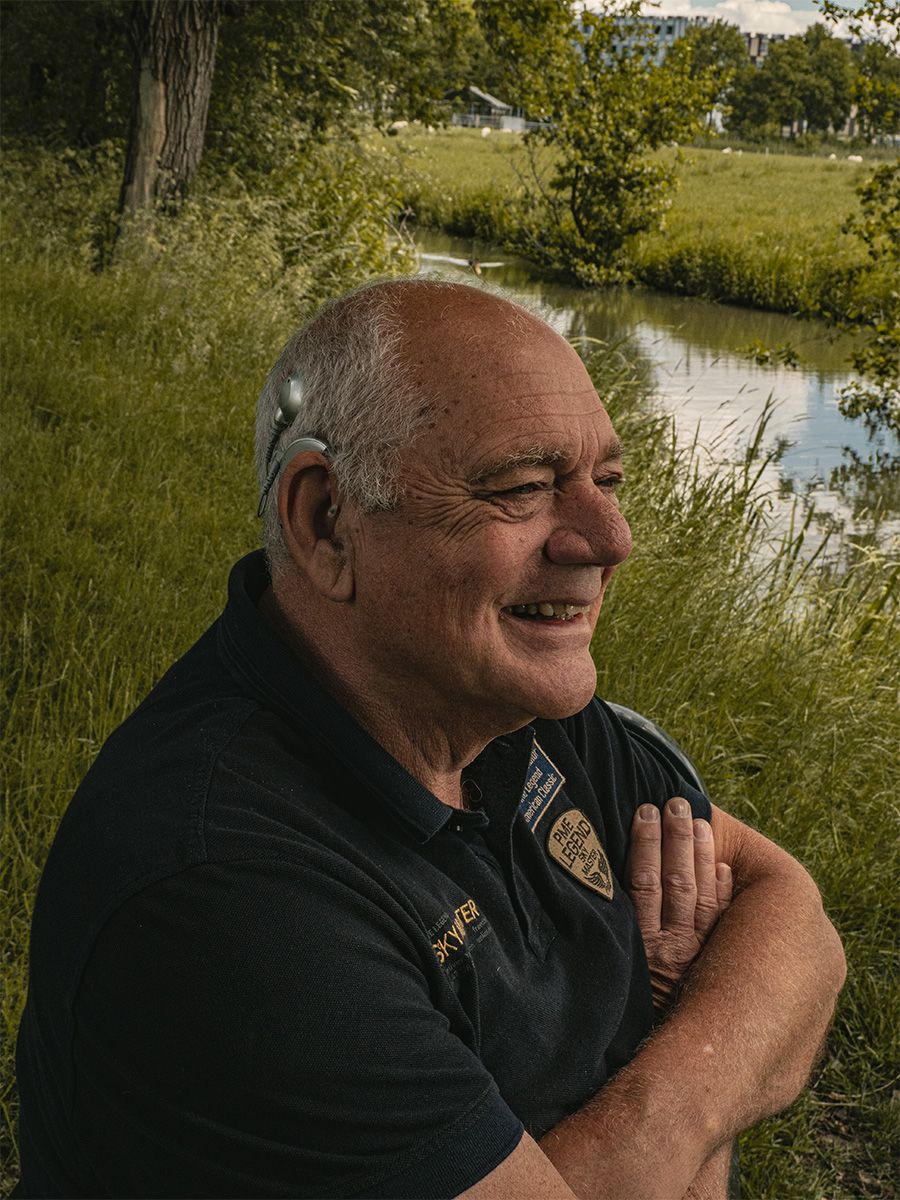
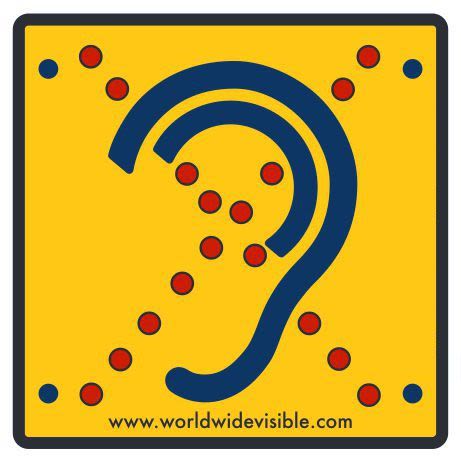
"It really is my buddy."
Jaap van Ewijk lives in Breukelen, is father of two daughters and has four grandchildren. 20 years ago he was struck by sudden deafness in his left ear; six years ago sudden deafness on the right. He had his own business, but he sold it. "I went from 80 hours to zero hours," he said. At a home meeting, he learned more about the CI. "I then went to the UMC in Utrecht and said 'Do me one of those,' but it didn't work that way."
"I never felt bad about having a CI. I was happy to hear something again. I got to learn Dutch with supportive signs (NmG). At the same time, I work with everything: the Roger Pen microphone, spare batteries always with me, streaming TV. The CI has really become my buddy.
"I was required to go to Mental Health and Social Services. 'What am I going to do with these soul-searching people?' I thought. But I learned that you just have to express that you are hearing impaired. That's what I started doing."
"Especially on my bike, because it irritates me that the CI is then so noisy . I was sometimes scolded by cyclists because I couldn't hear them ringing. That's why I put on one of those 'Limited Hearing' signs. Now they catch up to me, turn around and say 'THANK YOU'. Like I'm insane!"

"I now focus on what can be done."
Ingrid Cuppen, 43, lives in Leunen in northern Limburg. At 28, she found out she was hard of hearing. There were already signs, but some things have to happen before you realise it.
"I started with hearing aids: invisible, because I was embarrassed. Until I dropped out at work in 2017. I had been constantly overcompensating. That's when I decided to enter the CI program. It turned out very positive. I got back things in life that I had been missing."
"The CI caused me to look for other work. I now work for Ctalents, an employment agency for the visually and hearing impaired. I focus my attention on what I can do. And when it doesn't work out, that's when I motivate myself to figure out how it can be done; what I feel comfortable with."
"Sometimes I turn my processor (CI) off when things get too busy at home. I have a partner and two daughters. Just taking away those stimuli and giving myself 5 minutes of peace and quiet."
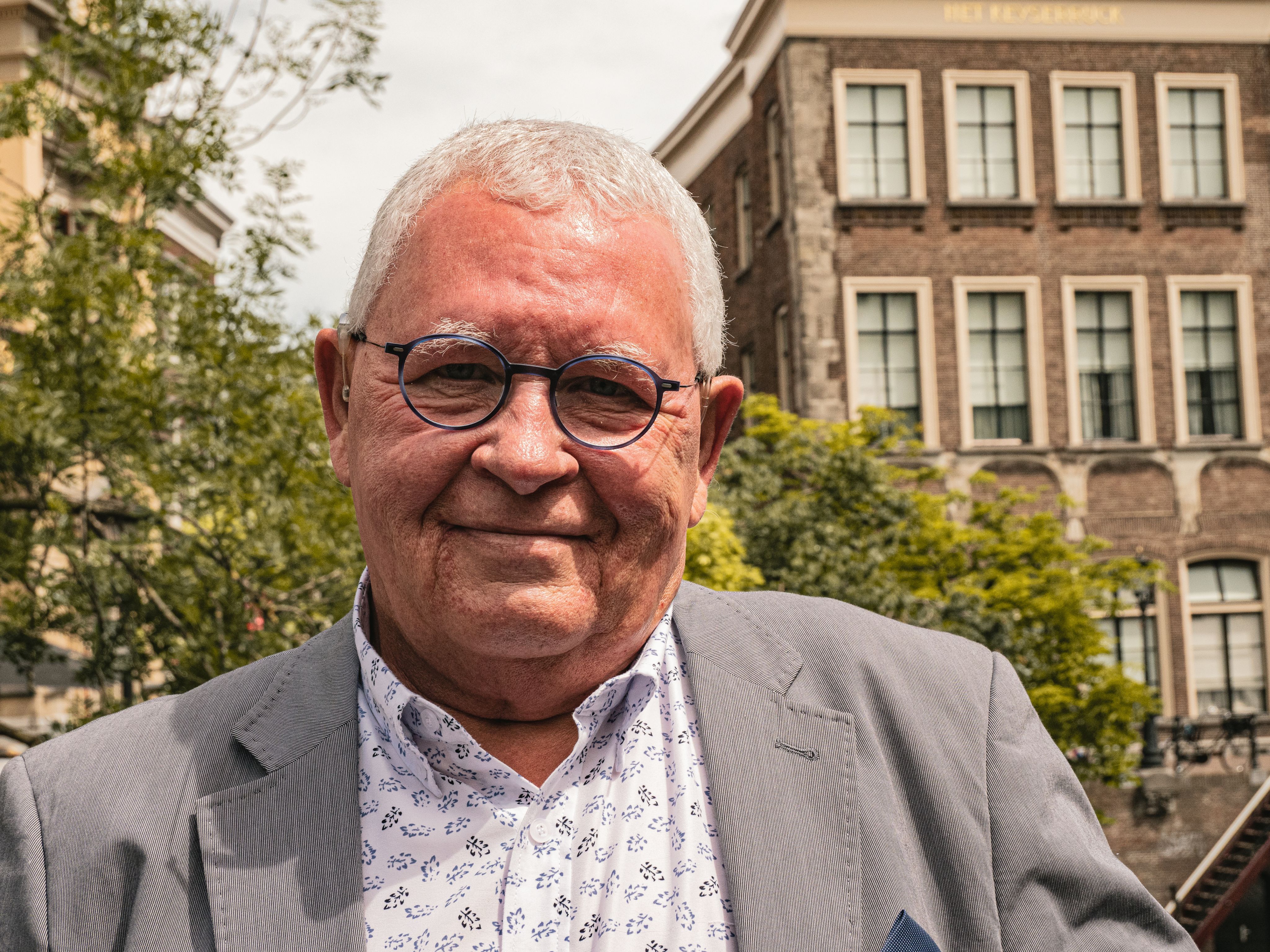
"I like to show my CI because I am proud of it"
Henk van Rees is 66 years old, lives in Voorburg, and is the proud grandfather of two beautiful granddaughters. He enjoys reading and traveling to warm destinations. Henk was hearing and he worked for a large health insurance company. Due to an accident in 1996 he got sudden deafness.
When Henk got a CI 16 years later, it marked a big change. "In 2013, I started working for OPCI (Independent Platform Cochlear Implantation). I am active as a member of the steering committee, advocate and educator. I follow people through their journey and beyond. I love it when they find work again and manage to keep it despite the obstacles."
"When people talk about something I'm not interested in, I can just turn off my CI. My partner is not into soccer. Then I stream the sound directly to my CI and then it doesn't bother her."
"I still feel a barrier to visualise my hearing problems with pins or signs. I prefer to show my CI because I am proud of it and it makes for great conversation."
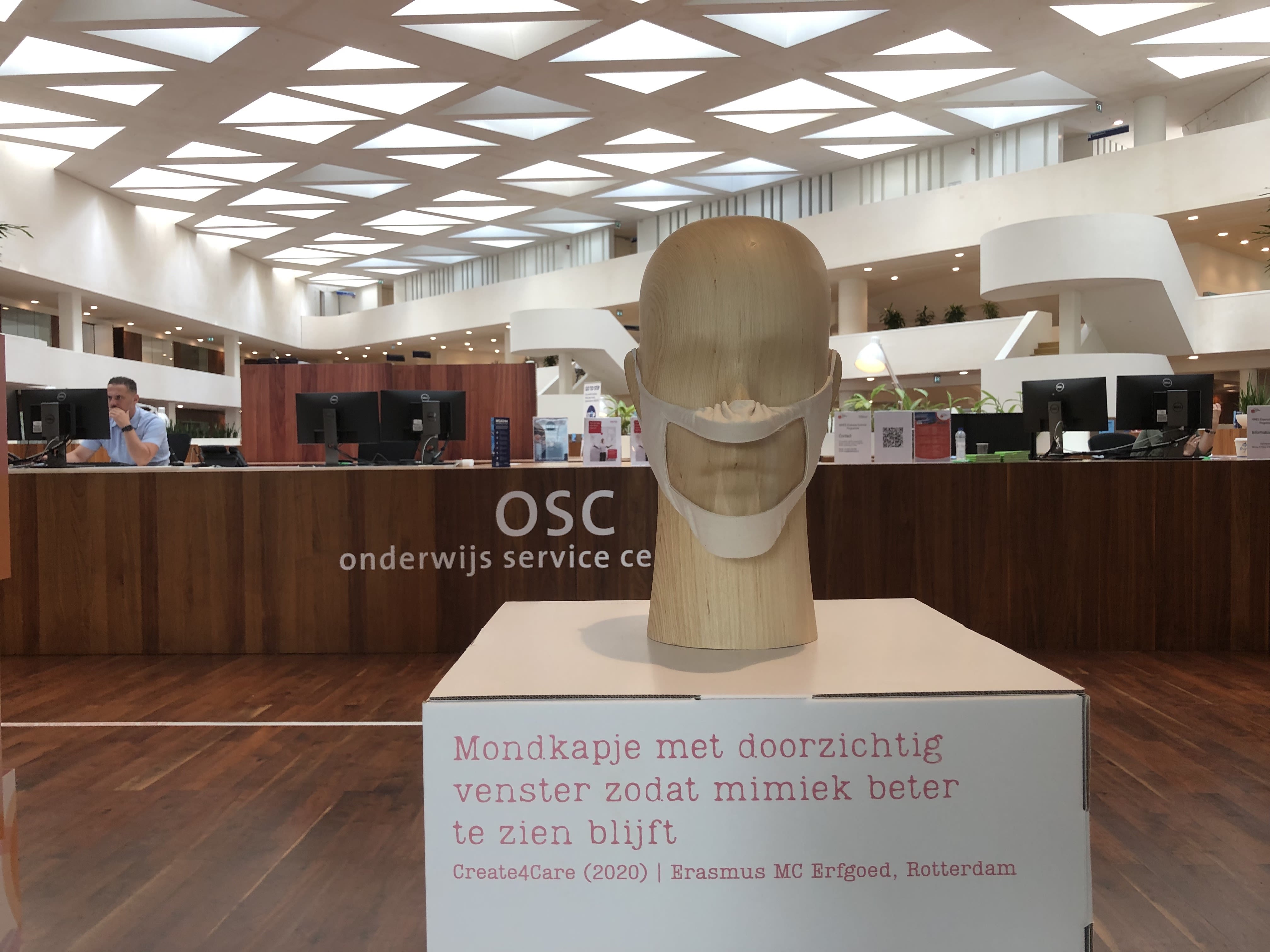
HEALTHCARE BARRIERS
About 1.5 million people in the Netherlands are deaf or hard of hearing.
How do they experience healthcare? And how can they best be approached when seeking medical attention?
HOW DO DEAF AND HARD OF HEARING PEOPLE EXPERIENCE HEALTHCARE?
Communication between Deaf and hard of hearing people with hearing people is often difficult.
Many Deaf and hard of hearing patients have negative experiences in their dealings with doctors and other medical professionals.
Why is that? Where do things go wrong?
"If a caregivers are wearing face masks, lips and facial expressions cannot be seen properly."
"A professional interpreter is not available at short notice. Well, then I'll just not go..."
"Making or rescheduling appointments by phone is just not possible for me."
"In the waiting room, I don't know when it's my turn when names are called out."
"The doctor only talks in unfamiliar jargon. Nobody understands it, do they?"
"I get text on paper, but it's not my language, so I still don't understand it."
"Oh, those 7 minutes are up already?!"
Professionally trained Sign Language and speech-to-text interpreters are registered and keep confidentiality. Thus, they can be hired to ensure good communication between doctor and patient. So an interpreter seems to be a solution to good communication.
But in health care, interpreters are not always the perfect solution, because:
A family member can help as an interpreter, but the caregiver then often talks to the family member instead of the patient. Patients feel left out as a result.
The family interpreter is less proficient in sign language, does not translate optimally, and does not write down the spoken text quickly enough.
Despite professional confidentiality, some patients do not feel comfortable with sharing sensitive matters with an interpreter.
Unfortunately, interpreters are often not available on short notice.
Professional interpreters are in some cases barred by doctors and other medical personnel because of "the invasion of privacy."
But this can actually cause patients to miss important information, with dire consequences.
There are also barriers because of the cultural difference with Deaf people. Due to language difference, the educational level of Deaf people is not properly assessed. Deaf patients are sometimes perceived as stupid, but this is a big misunderstanding.
If patients are seen as "dumb," then this affects information delivery.
Sometimes offensive words such as "deaf and dumb" are used.
Deaf people often have different manners than hearing people. They give sight and touch more consideration. A hearing person may think it inappropriate, but Deaf people make more physical contact and take longer to say goodbye.
Deaf and hard-of-hearing patients experience many unnecessary barriers in healthcare. This contributes to poorer health of deaf and hard of hearing people in general, according to recent research by paediatrician and linguist Anika Smeijers.

Dissertation by paediatrician and linguist Anika Smeijers (2019)
Dissertation by paediatrician and linguist Anika Smeijers (2019)
Often Deaf and hard of hearing people struggle with physical health problems such as cardiovascular disease, obesity, and high blood pressure. This is due in part to poor communication with doctors and less access to health information. But if doctors and patients are aware of this, care can quickly improve.

Many deaf patients negatively experience their dealings with doctors and other medical professionals. "There were often misunderstandings because we didn't understand each other well. But if I have an interpreter with me or if we use pen and paper, I have no problem."
"I always try to bring an interpreter. But there is too much demand for interpreters and there are too few of them. So my mother, sisters and brother-in-law sometimes do interpretation work."
In 2004, Jaap Huysman had to spend a long time in hospital because of cerebral sinus thrombosis. He was unable to speak, nor could he wear glasses for a long time. Family and nurses kept a notebook to communicate with Jaap. "The small written texts were not legible, the large ones were, which made me very happy. If that notepad hadn't been there, I wouldn't have known what was going on at all."


In 2007 Annemieke Ceton became suddenly deaf in due to a very severe middle ear infection in both ears and meningitis.
"I still have piles of those notebooks that everyone wrote full. It helped me when I suddenly went deaf."
"We started with loose leaves, because yes, I was suddenly deaf. I didn't know any sign language and nobody knew anything about aids."
"The notebooks were completely filled up, especially by the writing of nurses and family members. I think one doctor may have written something."
"So that's kind of special, when you think back to it: doctors were at my bedside, but didn't look at me, and I had a thousand questions. But that's how it was back then."

A page from the notebook of Annemieke Ceton
A page from the notebook of Annemieke Ceton

A page from the notebook of Annemieke Ceton
A page from the notebook of Annemieke Ceton

A page from the notebook of Annemieke Ceton
A page from the notebook of Annemieke Ceton
Deaf or hard of hearing people can easily be dismissed as "difficult patients". But patients with "complex needs" or "a-typical bodies" are made so by the standardisation and efficiency of modern health care.
Patients with hearing differences are precisely an opportunity to critically review audism (hearing is the norm) within healthcare. Let's give space to patients as well as healthcare professionals to actively and flexibly shape care.

Book by Trude Schermer, Corline Koolhof, Alex Stuifbergen (Nederlands Gebarencentrum, 2006)
Book by Trude Schermer, Corline Koolhof, Alex Stuifbergen (Nederlands Gebarencentrum, 2006)

Talk calmly and clearly and use natural gestures and facial expressions. It is useless to talk loudly or exaggerate. Make sure your mouth is clearly visible.
Talk calmly and clearly and use natural gestures and facial expressions. It is useless to talk loudly or exaggerate. Make sure your mouth is clearly visible.

Make agreements about communication. Ask the patient how they prefer to communicate and include this in the patient's record.
Make agreements about communication. Ask the patient how they prefer to communicate and include this in the patient's record.

Always look at deaf and hard of hearing people when talking, because they cannot hear what is being said. Don't look away, because that comes across as ending the conversation or that you are not listening.
Always look at deaf and hard of hearing people when talking, because they cannot hear what is being said. Don't look away, because that comes across as ending the conversation or that you are not listening.

Always write down names, addresses and dates. Have the patient repeat important information.
Always write down names, addresses and dates. Have the patient repeat important information.

Provide good lighting on speakers' faces, as lip reading is not possible in the dark. Preferably talk 1 on 1, as a group conversation is difficult for a deaf and hard of hearing person to follow.
Provide good lighting on speakers' faces, as lip reading is not possible in the dark. Preferably talk 1 on 1, as a group conversation is difficult for a deaf and hard of hearing person to follow.

Deaf and hard-of-hearing
HEALTHCARE PROFESSIONALS
Often we think the doctor is hearing and the patient is deaf. The hearing doctor treats, the deaf patient is being treated.
But deaf and hard of hearing people also work in health care. Who are they? What do they encounter?
EXPERIENCES OF HEALTHCARE PROFESSIONALS

Pictures of Kaau and his publications
Pictures of Kaau and his publications
Abraham Kaau-Boerhaave (1715–1758), Herman Boerhaave's nephew, studied medicine in Leiden, but suddenly became deaf at age 21.
All sorts of treatments were tried, but his hearing did not return, and he could only be approached in writing or with signs.
Hoping that he would still be cured, he continued his studies in an adapted manner. Since he could no longer attend lectures, he was taught personally by his uncle.
He went to work as a pharmacist and published books. He was appointed professor of anatomy at the Academy in St. Petersburg. Kaau could speak, and when communicating, Kaau was assisted by an assistant.
Kaau complained that after many years he was "not even, but there even put behind," in other words, he was paid less than his colleagues.
Dentist Marten Koning (1956–2021) had his own practice in Amsterdam. When he graduated in 1990, he made history because he was the first deaf dentist in the Netherlands.

Newspaper articles about Marten Koning
Newspaper articles about Marten Koning

Francien Ellermeijer became a pharmacy assistant at 18: "After I took Mr. Louwman's medicine to Mr. Bouwman, customer contact was 'forbidden' to me."
After various studies, she secured several other jobs until her retirement. "I ran into my hearing impairment again and again; I came home every day overtired and often with a headache. And even worse/worse: I didn't dare report my hearing impairment, I was afraid of losing my job."
"How nice it would have been if I had had someone or an agency at the time who could have guided me in making the right educational and job choices that better suited my hearing loss."
Watch this video clip of Jan-Pieter Govers' public hearing.

Newspaper articles about Jan-Pieter Govers
Newspaper articles about Jan-Pieter Govers
As a deaf medical student, Jan-Pieter Govers ran into all sorts of obstacles.
The level of education was underestimated, because deaf and hard-of-hearing students are often thought to be dumber than they are.
The admissions committee for the study of medicine doubted whether the student could later listen properly through the stethoscope and treat patients.
Seeing the stethoscope as an obstacle is ironic, because it is actually a hearing aid, similar to the ear trumpets of old.
Mercèdès Vossenberg-Terlaak ((now rehabilitation physician, Maxima Medisch Centrum, Veldhoven) is hard of hearing and began studying medicine in Groningen in 2006.
"I communicate with people by looking right at them. Furthermore, I can lip-read a little. Shouting is useless, because then the sound gets pretty distorted. During lectures I ask lecturers to wear an extra microphone. With my so-called solo device - a special transmitter and receiver - I can understand the lecturer."
During lectures, she experiences little resistance from lecturers. "So far they respond well," she says. "Everyone is willing to wear the microphone. In that respect, I am not disappointed in anything. And I'm just following the curriculum."

"Giving, getting and taking opportunities"
"I am Jeroen Smits, holding a PhD in hereditary hearing impairment and doing my medical specialty advanced training as a clinical geneticist.
"That sentence may say where I am now, but nothing about my long journey. Which began, after my hearing loss was diagnosed, with enrollment in a school for the deaf and hard of hearing. But because I learned to listen and talk quickly with my hearing aids, it was decided to let me go to mainstream education. Several schools in the area did not want me as a 4-year-old student. In the end, teacher Rita in Zwolle said, 'Just put him in my class and it will be all right,' an opportunity which I seized with both hands.
"Also in high school, university and during internships there were people who did not want to give me a chance from the start, without (wanting to) get to know me. Although many more others saw that I functioned like everyone else, it remained painful and exhausting to constantly fight the naysayers. While I believe that within society, especially the medical field, there is much more need for diversity. Because otherwise, those who are 'different' will always remain in the shadows and get sporadic opportunities.
"Unknown makes unloved.
"I do consultation hours in hereditary hardness of hearing (and other hereditary conditions). Every time parents comes in with a hearing-impaired or visually-impaired child, I always take the time to discuss that, despite the difficult condition, it's still important to think in terms of possibilities. And then I think with them and try to give opportunities.
Will you do the same?"
YO, DOC, LISTEN UP!
What is 'normal' hearing? Just like there are many different people, there are big differences in how and what we hear.
When we're younger we generally hear more high-pitched sounds than when we're older.
Some people are more sensitive to loud sounds than others.
Hearing also depends on the environment. Many find it more difficult to understand voices in an echoing room.
Over the years, tremendous medical research has been conducted, technological advances in hearing aids made, and innovative apps invented – all making communication smoother.
But diversity in our hearing will always be a constant. After all, everyone has their own hearing experience.
Inclusive Healthcare
Hearing difference has long been an obstacle for those who want to work in healthcare. The obstacle is not deafness or hardness of hearing. The obstacle is primarily the fear of the deaf (surdophobia) and the prejudice against the hearing (audism).
Bringing about a culture shift is not easy and takes time. Increasingly more hospitals and faculties, such as Erasmus MC, have diversity and inclusion as a priority.
Accessible Healthcare
Hearing difference should not be an obstacle, because everyone has a right to good healthcare. The 'difficult' patient does not exist, only the prejudice that hearing is the norm (audism) and the limiting work processes of standardisation and efficiency.
Let's give patients and healthcare professionals the freedom to make care flexible and accessible.
HEARING DIFFERENCE IS THE NORM
THANK YOU FOR YOUR VISIT!
Meer informatie
Vanaf vrijdag 1 juli tot en met vrijdag 30 september 2022 is de tentoonstelling voor iedere geïnteresseerde (gratis) te zien in het Erasmus MC.
Adres
Erasmus MC
Dr. Molenwaterplein 40
3015 GD Rotterdam
Bezoekuren
maandag t/m vrijdag 09.00 – 17.00 uur
weekenden gesloten
Let op: studiezaal
Het Onderwijscentrum vormt het middelpunt van de faculteit Geneeskunde van het Erasmus MC waar studenten colleges volgen en studeren. Respecteer deze leeromgeving: pas alstublieft je stem, apparatuur en gedrag hierop aan.
Route
Je kunt de fysieke tentoonstelling in het Onderwijscentrum bezoeken via Ingang Museumpark of via de Hoofdingang. Deze zijn ook per lift bereikbaar.
Ingang Museumpark:
Vanuit het Museumpark steek je het bruggetje over naar het Erasmus MC. Na binnenkomst, ga je de eerste trap links omhoog (af pak je de lift naar etage 2).
Hoofdingang:
Na binnenkomst ga je de (rol)trappen op en bovenaan linksaf de Passage in. Aan het eind van de Passage (Ingang Museumpark) ga je de trap rechts omhoog (of pak je de lift naar etage 2).
Questions?
Get in touch via erfgoed@erasmusmc.nl
Curation:
Ruben Verwaal | Curator medical heritage Erasmus MC and post-doc fellow at the Institute for Medical Humanities, Durham University
Wies Groeneveld | Writing Agency Taalgras en author of the book ‘Een en al oor’
In collaboration with the Expert Group:
Jennifer Chin | Dovenschap
Lianne Westenberg | Dovenschap
Kees Twilt | Stichting Hoormij/NVVS
Annemieke Ceton | Stichting Plots – en Laatdoven
Gera Vonk-Huisjes | Stichting Welzijn Doven Rotterdam (SWEDORO)
Edwin Zijdenbos | Stichting Slakkenhuis (Vlaardingen en omgeving)
Judith Roose | GGMD voor Doven en Slechthorenden
Karin van Vianen | Koninklijke Auris Groep
Regina Bijl | HoorCoach
Henk van Rees | Onafhankelijke CI-expert
Floor Haalboom | Erasmus MC
Mick Metselaar | Erasmus MC
Martijn Toll | Erasmus MC
Courtesy of:
Ingrid Cuppen | Shared personal experiences
Francien Ellermeijer | Shared personal experiences
Jaap van Ewijk | Shared personal experiences
Ineke Huysman | Helped to interview Jaap Huysman
Jaap Huysman | Shared personal experiences
Jeroen Smits | Shared personal experiences
Anita van der Weg | Shared personal experiences
Production:
Laura Bultman | Graphic design | www.captainpolidori.nl
Sam Piek | Photography | www.sjpiek.nl
Geeske van Voorthuijsen | Illustrator | www.geeske-illustrations.nl
‘Yo, doc, listen up!’ came about thanks to the support of:
Erasmus University Medical Centre, Rotterdam
Institute for Medical Humanities, Durham University
Dutch Research Council (NWO)








